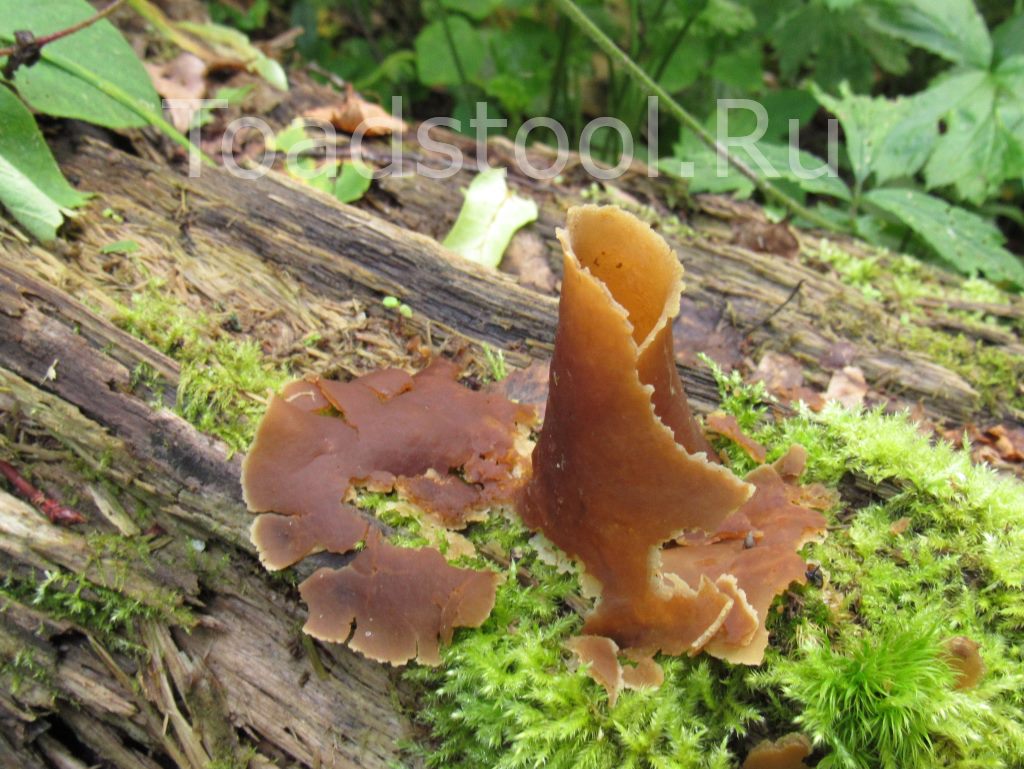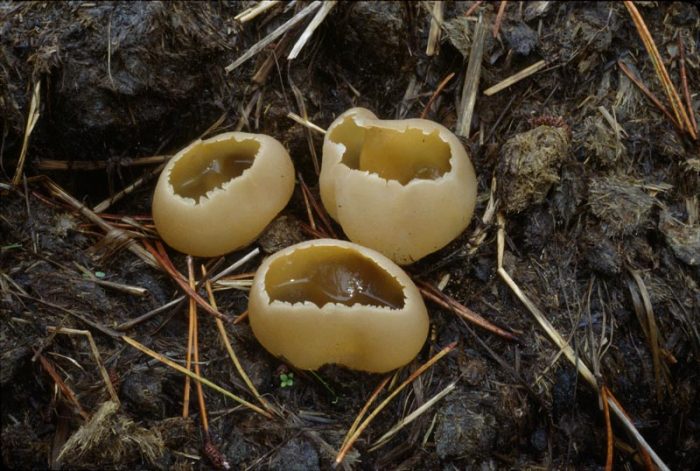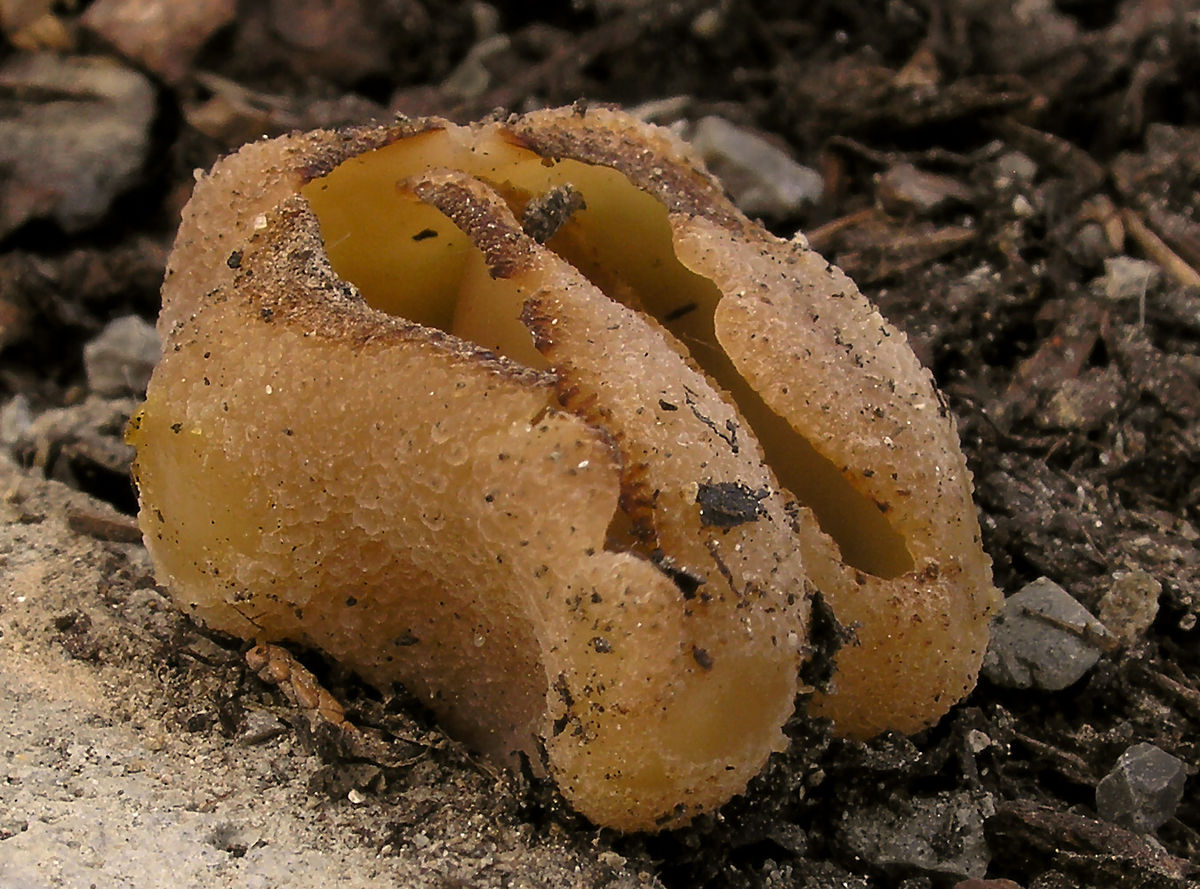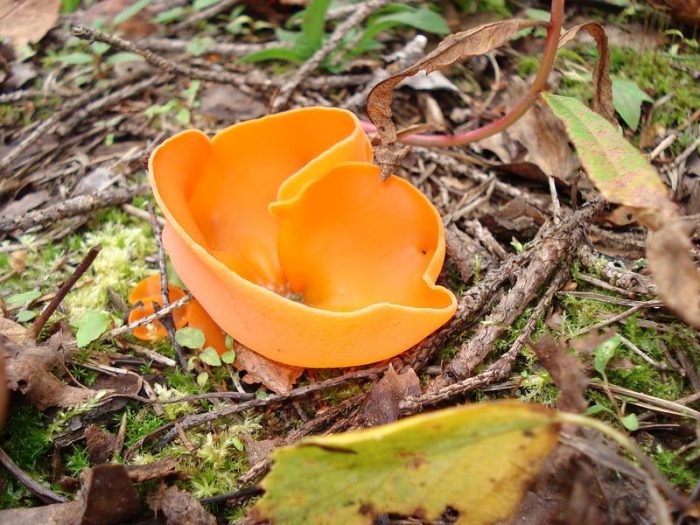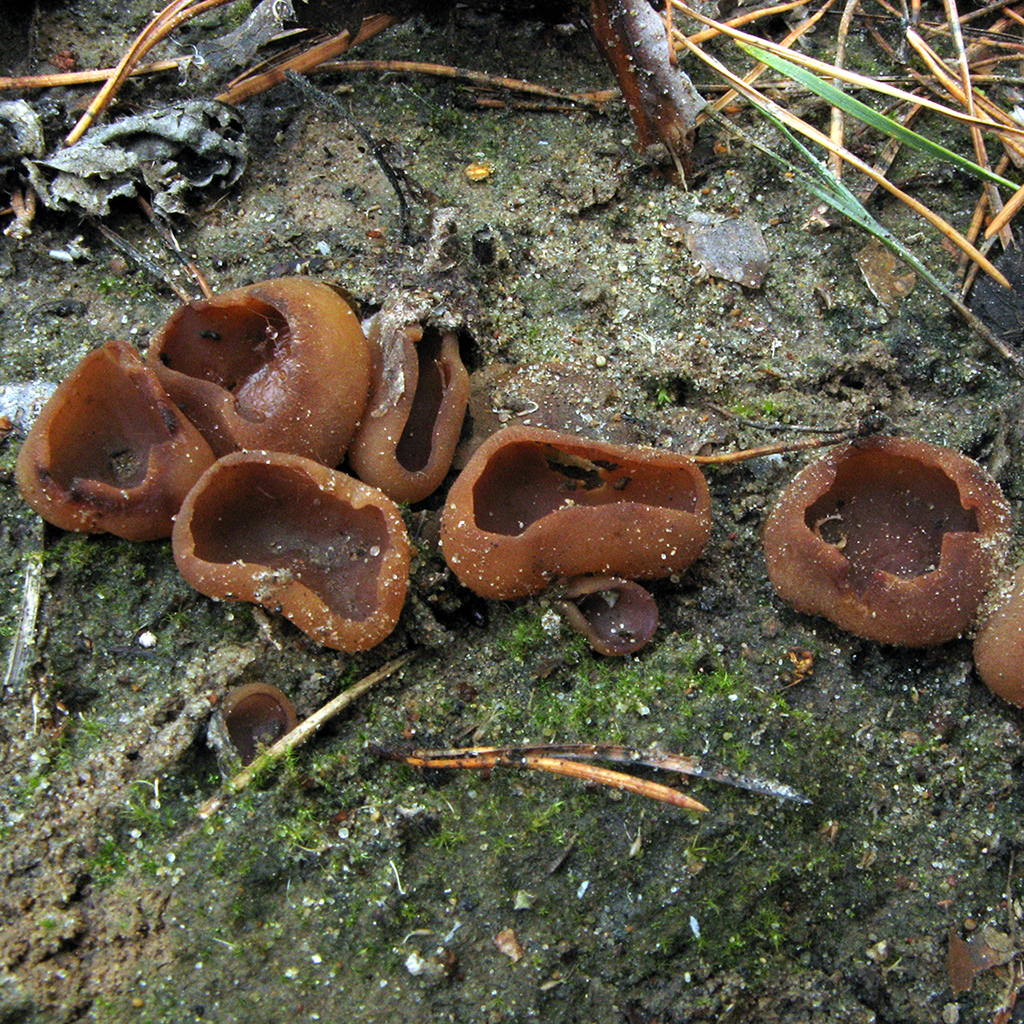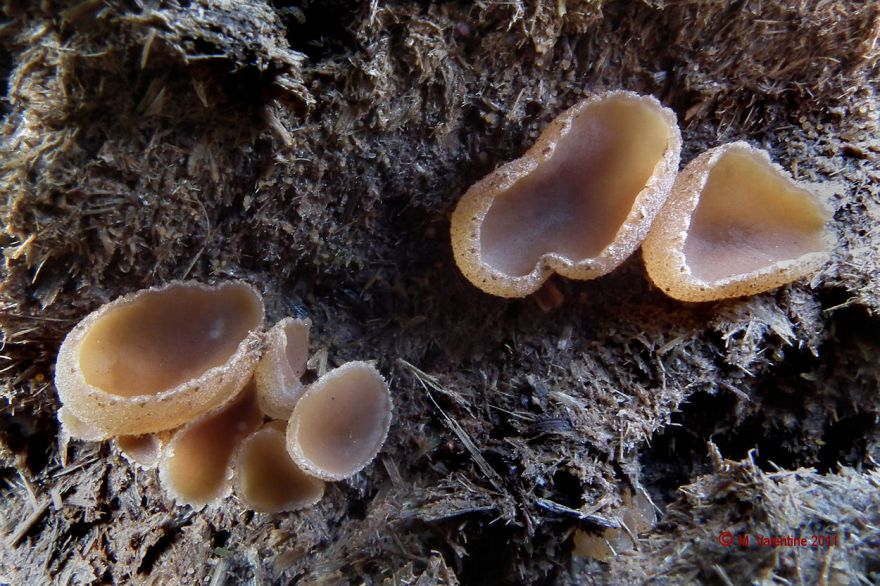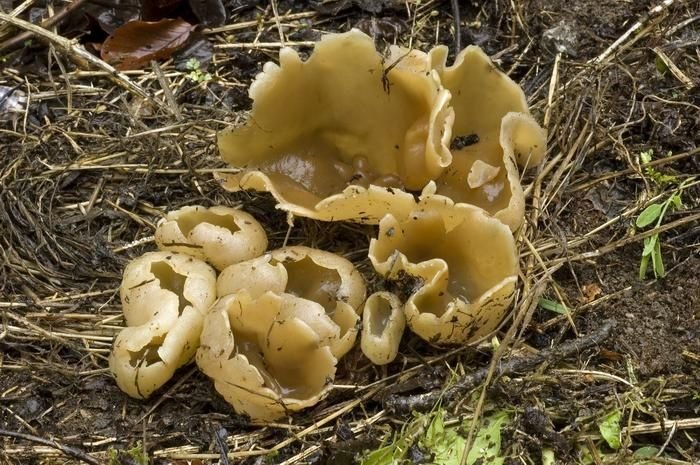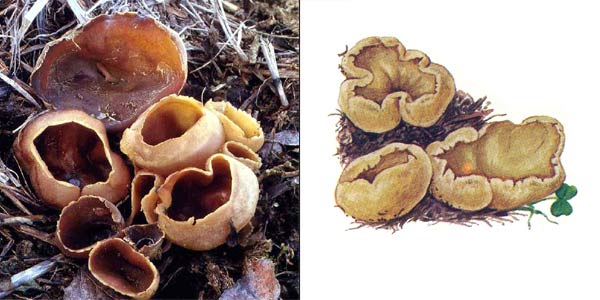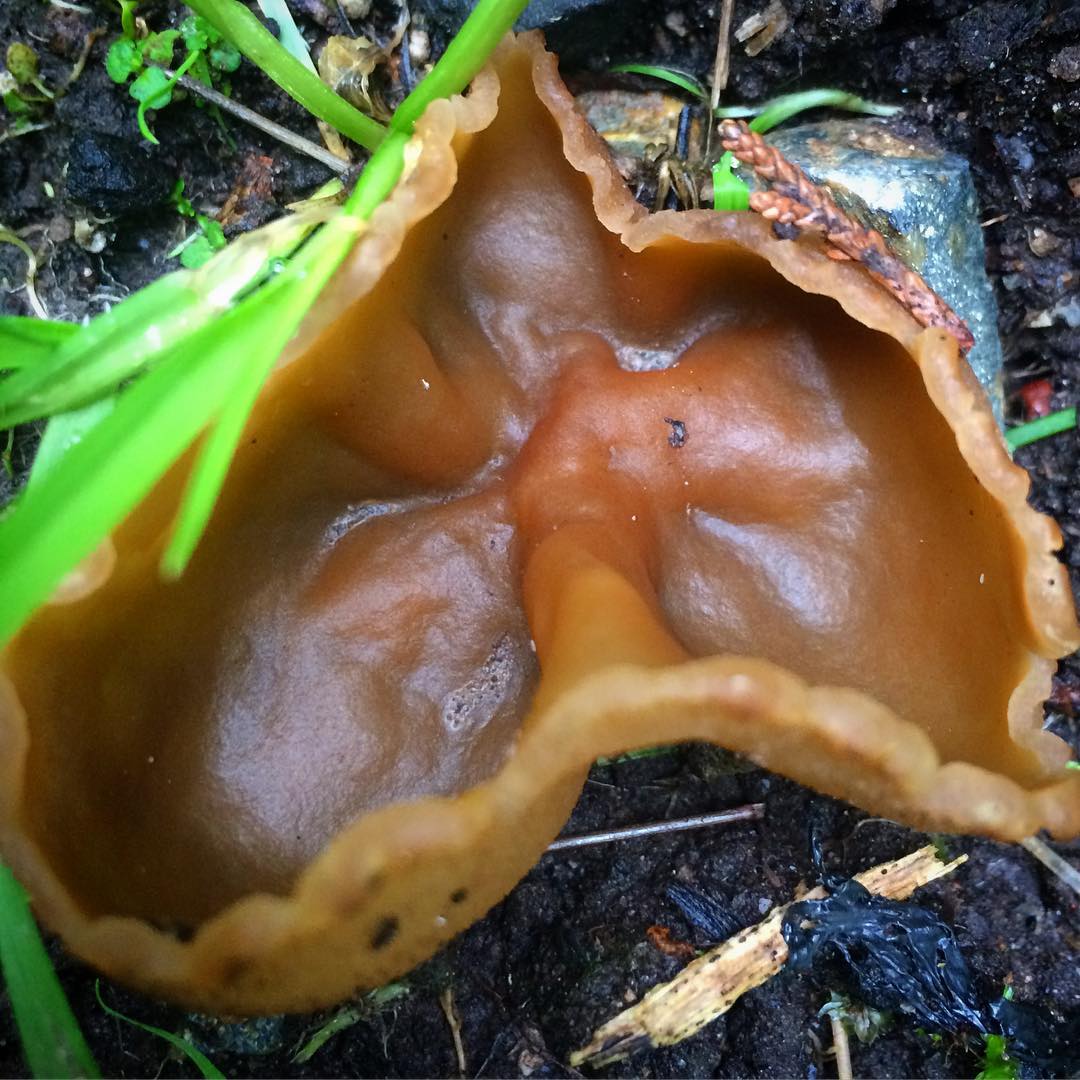Bubble Pecica (Peziza vesiculosa)
Current title
| Index Fungorum | Peziza vesiculosa Bull. | |
| MycoBank | Peziza vesiculosa Bulliard |
Systematic position
Habit
Fruit body: Cup-shaped, saucer-shaped, in the form of ears (discomycetes)
Hymenophore: Smooth, not pronounced
Fruiting body
Apothecia in groups, at first almost immersed in the soil, later protrude, cupped, with a brownish hymenial layer, with a jagged edge, whitish-yellowish outside, as if sprinkled with flour, in the lower part they are elongated into a poorly differentiated stalk, fleshy, very fragile.
Microscopy
Bags are cylindrical, 300 - 500 × 18 - 20 microns, eight-spore.
Spores are ellipsoidal, smooth, 18 - 24 × 10 - 14 µm, located in the upper part of the bursa in one row.
Paraphysis filamentous, up to 4 µm wide, expanded at the apex to 9 - 12 µm, yellow-golden.
Ecology and distribution
- Substrate: Soil, litter
- Substrate: Excrement
Forms dense growths on manure and manured soil, in garbage dumps and flower beds.
Fruiting
From late spring (late May) to October.
The divisions correspond to the decades of the month.
Nutritional properties
Related materials
Smitskaya M.F. - Operculative discomycetes (Flora of fungi of Ukraine) (1980)
Link to this page for prints
Ageev D.V., Bulonkova T.M.
Share link
Discussions

| 65 | |
| Dmitry Ageev | |
| 2010-04-23T07: 50: 56 | |
| Last modified date: | 2018-08-12T03: 33: 41 (Dmitry Ageev) |
OOO OOO OOO OOO OOO OOO OOO OOO OOO OOO OOO OOO OOO OOO OOO OOO OOO OOO OOO OOO OOO OOO OOO OOO OOO OOO OOO OOO OOO OOO OOO OOO OOO OOO OOO OOO OOO OOO OOO OOO OOO OOO OOO OOO OOO OOO OOO OOO OOO OOO OOO OOO OOO OOO OOO OOO OOO OOO OOO OOO OOO OOO OOO OOO OOO OOO OOO OOO OOO OOO OOO OOO OOO OOO OOO OOO OOO OOO OOO OOO OOO OOO OOO OOO OOO OOO OOO OOO OOO OOO OOO OOO OOO OOO OOO OOO OOO OOO OOO OOO OOO OOO OOO OOO OOO OOO OOO OOO OOO OOO OOO OOO OOO OOO OOO OOO OOO OOO OOOì
Age restrictions
Federal Law of the Russian Federation of December 29, 2010 No. 436-FZ "On the Protection of Children from Information Harmful to Their Health and Development."
Control
2010–2019 All rights reserved.
Definitioner
Multicellular or unicellular non-spore-bearing outgrowths in some algae, fungi and mosses, which protect the genitals or spore-bearing organs from drying out and mechanical damage.
In the type, a completely open ascocarp, often saucer-shaped or goblet-shaped. An ordered hymenial layer is located on the surface of the apothecia, consisting of bags and sterile elements - the paraphysis, under which lies a subhymenal layer, in which developthere are asci, and everything else is made up of sterile hyphae of the pulp - the excipule. Apothecia is characterized by the simultaneous maturation of many asci and the active release of spores. Secondarily closed apothecia are found in fungi, whose fruiting bodies are oncecurl underground, like truffles.
See Ascocarp, Hymenium, Discomycetes, Paraphysis.
A specialized cell of marsupial fungi (ascomycetes), inside which ascospores develop as a result of the sexual process.
The structure of the bursae is an important diagnostic feature used in the ascomycete system. There are prototunicate and eutunicate asci. The first ones have a thin shell, not divided into layers, which spreads out during the maturation of ascospores, and they are released passively. The latter have a denser, layered membrane, equipped with a specialized apical apparatus for opening, and ascospores are actively discarded.
Among eutunicate asci there are uniticate ones, the layers of the shell which grow together and open simultaneously, and bitunicate ones, whose shell consists of two sequentially opening layers. A further subdivision of uniticate bags is based on the structure of the apical apparatus.
Pecica (Peziza vesiculosa): what it looks like, where and how it grows, edible or not
How much does Pecitsa cost (average price per 1 kg.)?
In addition to stitches and morels, other amazing mushrooms are often found in the spring forest. For example, small, brightly colored mushrooms, which at a young age resemble miniature bowls, and over time spread out on the ground and become more like saucers or plates, for which they are popularly called saucer mushrooms. However, scientifically, these unusual mushrooms are called petsitsa.
In fact, the petsitsa is the closest relative of the stitches and morels - they all belong to the Marsupial class. In order to understand what unites such different mushrooms, it is enough to remember that their spores are located on the surface of the morel cap. In addition, if you stretch this hat, straightening all the folds and giving the shape of a bowl, you get a real petsica.
Pecits mainly grow on the ground, however, they are able to master more interesting habitats. For example, some species of platypets eagerly inhabit the places of former bonfire sites, which is also similar to morels, which often occupy places of fire.
Regarding the size of pecits, you can see that these are not very large mushrooms, the diameter of which is mainly 1-5 centimeters (although there are rare specimens up to 10 centimeters). The color of pecits is diverse - depending on the type, mushrooms can be yellow, purple, brown, gray and even bright red.
So, for example, one of the species of these mushrooms - brown petsica - prefers to live on ordinary forest soils, though moist. Often, the small diameter, chocolate-brown fruit bodies of these pecites can be found in the forest on the soil or on dead wood. Forming a bowl, the edges of the cap are slightly turned up. By the way, most authors attribute this species to inedible mushrooms.
In addition, the bubble gum (Peziza vesiculosa) is a permanent inhabitant of gardens and greenhouses. Sometimes she even settles in flower pots, while growing in large groups and deforming. The flesh of the bubbly platypus is rather tough, brittle and waxy.
But the brightest and most eye-catching is the orange pecica, which has a very thin orange pulp, which resembles a piece of orange. It is she who is most often collected by mushroom pickers.
Regarding the gastronomic qualities of petsits, it must be said that this kind of mushrooms is quite edible, but their distinctive feature is the complete absence of any taste. Undoubtedly, you can fry or pickle (pickle) prepared pecice, but it is best to use them to decorate salads, as their attractive appearance and bright color will significantly enrich the aesthetic side of the finished dish.
Pecitsa varia (Peziza varia) how it looks, where and how it grows, edible or not
Pecitsa changeable: photo and description
Pecitsa varia (Peziza varia) is an interesting lamellar mushroom that belongs to the genus and family of Pecitsia. Belongs to the class of discomycetes, marsupials and is a relative of stitches and morels. Previously, it was distinguished by mycologists as a separate species. Recent studies at the molecular level have proven that the species considered to be separate species can be attributed to one large genus.
What does a changeable petsitsa look like?
Fruit bodies are bowl-shaped, do not have the usual caps. Young petsitsa changeable takes the form of a spherical cognac glass slightly open on top. As it grows, the edges straighten, taking on a funnel-shaped, and then a saucer shape with a pronounced depression in the place of growth and sides curled inward.
The edges are uneven, wavy, slightly ragged, jagged. There are chaotically spaced folds. The surface is smooth, brilliantly moist, like a varnish. The color is even, without differences, the color of coffee with milk, slightly greenish or brown shades. It can be creamy and golden-red. The outer surface is dull, with tiny hairs or scales, light, white-gray or yellowish. It can grow up to 15 cm. Its usual size is 4-8 cm.
The leg is missing. Some specimens have a small pseudopod. Spore powder is pure white. The pulp is gray or brown in color, with five to seven distinct layers.
Where and how it grows
The changeable pecitsa loves rotten, semi-rotten wood, saturated forest soil or old fires. The mycelium begins to bear fruit in the spring, when the weather is rather warm and the snow melts, it even got the name of the snowdrop mushroom.They continue to grow until the October frosts, and in the southern regions up to persistent frosts.
It occurs quite often, in small closely planted groups, in forests, gardens and parks. Distributed in the Krasnodar Territory and throughout Russia. It can also be seen throughout Europe and North America.
Is the mushroom edible or not
There are no exact data on the toxicity or edibility of this type of mushroom. The fruit body has an unsightly appearance, a thin rubbery flesh that is tasteless and devoid of any odor. The culinary value tends to zero, which is why the mushroom is considered inedible.
Doubles and their differences
Pecitsa changeable is extremely similar to the fruit bodies of the varieties of its own family. Their differences are minimal and almost invisible to the naked eye. Fortunately, no poisonous counterparts were found in the fungus.
Pecica ampliata (widened). Inedible. Does not contain toxic substances. As it grows, it acquires a pie-shaped, diagonally elongated shape and, as if smoked, brown-black edges. The color of the outer side is brownish-sandy.
Pecitsa Arvernensis (Auverne). Non-toxic, inedible due to low nutritional value. Has a darker color of the surface and pulp, the edges are smoother. You can often see a rudimentary pseudopod. The pulp is brittle, without pronounced layers.
Pecitsa repanda (blossoming). It is classified as an inedible mushroom due to its thin, tasteless pulp. The edges of the bowl are not wrapped, more elongated, for which they received the nickname "donkey ears".
Pecica micropus (small-legged). Inedible due to low nutritional value. The pulp is brittle, slightly layered. Its main difference from the changeable petsitsa is a pronounced pseudopod and small size, 1.5-6 cm in diameter.
Pecica Badia (brown). Non-poisonous, inedible. Fruit bodies have a rich brown and dark chocolate color, grow up to 16-18 cm.
Pecitsa changeable also bears great similarity to the fruit bodies of the genus Tarzetta (barrel-shaped, bowl-shaped, and others). They are distinguished by a pronounced pseudopod, light coloration of the outer side and miniature size, from 10 to 30 mm. Inedible due to their small size and low nutritional value.
Conclusion
Pecitsa changeable grows in forests on fallen trees and old stumps. It is found in gardens, parks and fields, on semi-rotted sawdust, in dead woods. Feels great on soil rich in woody humus. Has an original bowl shape. Its entire inner surface is a spore-bearing layer, the outer is sterile. The fungus can be found throughout the Northern Hemisphere in small groups from May to October. It has no nutritional value due to its thin, tasteless pulp, there is no exact data on the toxins or poisons it contains.
Uninvited guests


Most often it is bladder petsitsa, dung beetle, or golden bolbitus. It is very likely that the mycelium of cultivated mushrooms will win the fight and oust the impudent invaders.
It is much worse if molds grow on the substrate instead of mycelium. Then your crop will most likely die.
And all the substrate affected by the fungus will have to be destroyed.
Bubbly pecica (Pez / 'za vesiculosa) grows on fertilized soil in different types of forests, in parks and gardens, on rotted manure and in greenhouses, on rotten birch and aspen wood from the second decade to mid-October, singly and in groups, often very close , annually.
The fruit body of a petsitsa reaches a diameter of 10 cm. In adolescence, it is almost spherical, with a rounded, bent edge, then opening, in maturity it is cupped with a torn, inward edge, in old age it is saucer-shaped, often with a lobed, dried edge; sedentary or with a very short stem.
Inside, the surface is slightly wrinkled, dull or slightly shiny, beige, sandy-brown or light brownish with an olive tint, in the rain it is olive-brown, outside it is lighter, dull yellow, brownish or brownish-brownish, powdery or sulphurous. The pulp is brittle, fleshy, waxy, light yellow or brownish, without any special smell.
Pecitsa is considered inedible, although some experts claim that it is edible after boiling for 15 minutes, although it is not very tasty.
I wouldn't risk it.

The cap of the bolbitus reaches a diameter of 5 cm.In adolescence, it is hemispherical or ovoid with an appressed, lobed-wavy edge, mucous, convex at maturity, prostrate and even depressed, sometimes with a small tubercle, with a raised, ribbed, uneven, sometimes torn edge.
The cap in youth is bright yellow, golden yellow, shiny, at maturity olive yellow, light brownish, yellow-brownish, striped along a grayish or brownish edge, with a pale yellow center and yellow center. It is translucent, thin and fragile.
The skin is smooth, shiny, sticky.
The plates are frequent, wide, not adherent to the stem, whitish or yellowish in youth, cinnamon or rust in maturity.
The leg of the bolbitus grows up to 10 cm in length and up to 3 mm in thickness. It is cylindrical, fragile, fibrous, hollow inside, pale yellowish with a whitish bloom.
The pulp is fragile, tender, watery, very brittle, whitish or yellow, almost odorless and tasteless.
Pecica
The Pecica mushroom does not have a cap as such; it has a sedentary fruiting body. In a young mushroom, it is bubble-shaped, then, with age, it opens, and by old age it takes the shape of a saucer with the edges slightly tucked up. The diameter can reach from four to ten centimeters.
The surface is brown, smooth, shiny in wet weather. The outer surface is brown, slightly grainy. The pulp of this mushroom is thin, brittle, does not have a special taste or smell. Spore white powder.
This mushroom can be found in forests of absolutely any type, on deadwood, rotten wood and on the soil, from mid-May to early autumn. Some sources can attribute this mushroom to edible, but in appearance and quality, this mushroom does not inspire confidence, so most authors classify it as an inedible mushroom.
Pecitsa purple
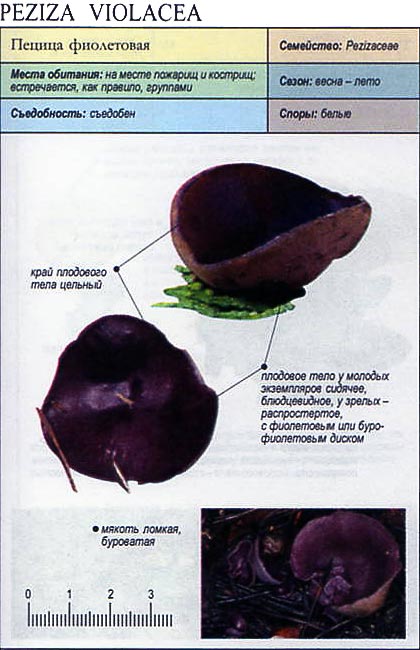
-
Edible Pecica Mushroom orange (Aleuria aurantia) is distributed in coniferous and mixed types of forests, quite often you can find it ...
-
Encyclopedia mushrooms > Edible mushrooms
Albatrellus confluens Albatrellus confluent - annual edible mushroom... Basodiomas have a central ...
-
Encyclopedia mushrooms > Pecica
Pecica changeable (Peziza varia) Fruit body: young mushrooms has the shape of a hemisphere, bowl-shaped. ... Headings: P, Conventionaledible mushrooms.
-
Names and descriptions of popular edible mushrooms, . … Pecica... White steppe mushroom... Reindeer rocking. Caesar mushroom.
-
Tatyana Vladimirovna Lagutina - 2013 - Nature
Hat mushroom convex, but over time it straightens and becomes ... Pecica brown represents edible mushroom, In some … -
I.A. Dudka - - Science
Little known edible mushroom. Pecica notched Pecica wiTmchata Fe212a herapda Regs. : Rg. Fruit bodies 2-10 cm in diameter., Single or ... -
23 Jan 2013 … As a rule, people only cut off those mushroomsthat you are sure of. ... next at least edible mushroom — petsica orange.
-
A. Polenov - 2014 - Nature
… Tesselatum) 112 Sheep mushroom (Albatrellus ovinus) 116 Deer mushroom (Pluteus ... 40 Pepper mushroom (Chalciporus piperatus) 108 Pecica brown (Peziza ... -
Lagutina T. - - Nature
Although combined with others mushrooms gives the dish a spicy spicy taste. ... Pecica brown represents edible mushroom, In some …


